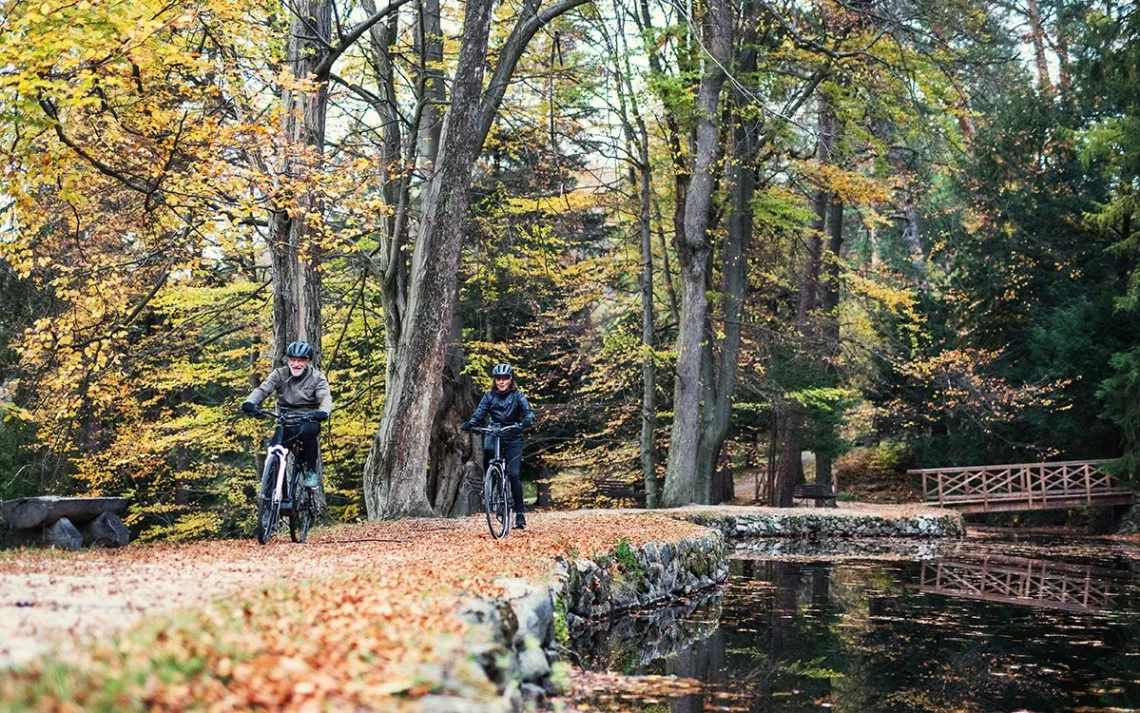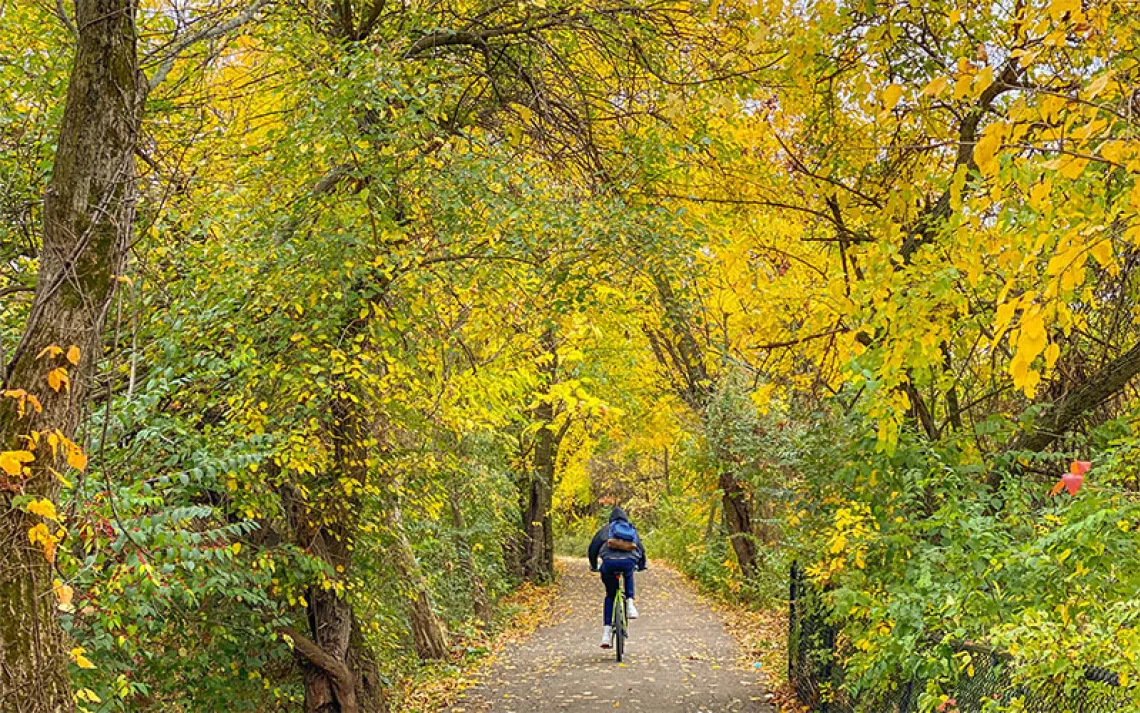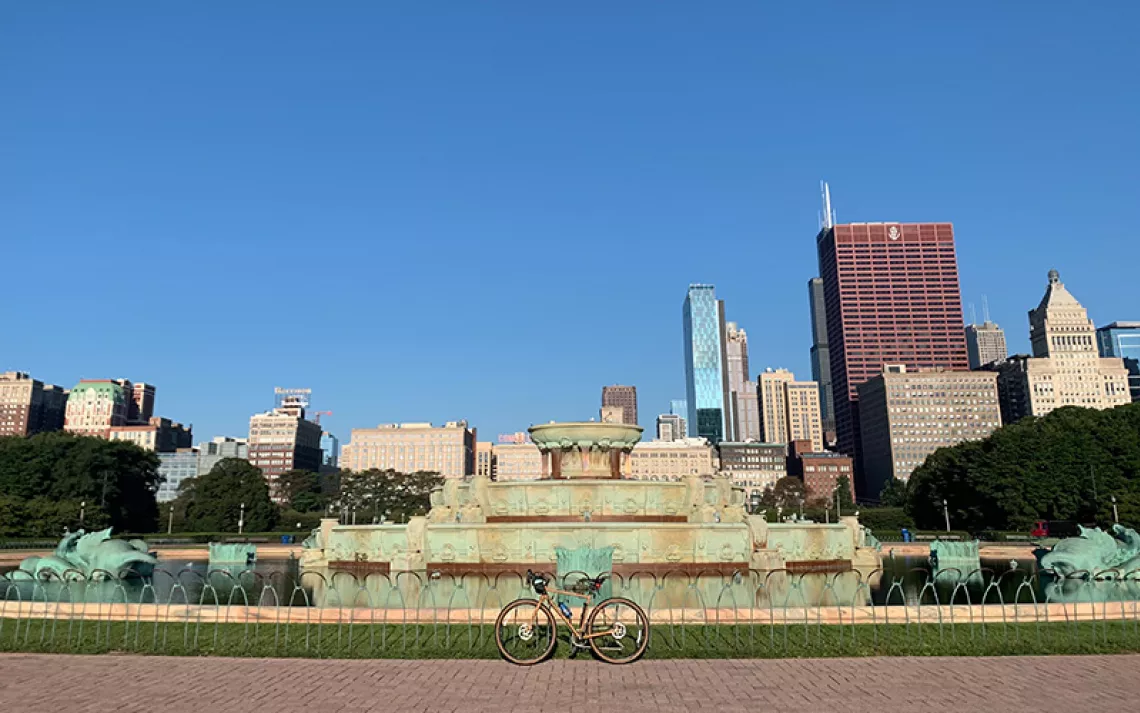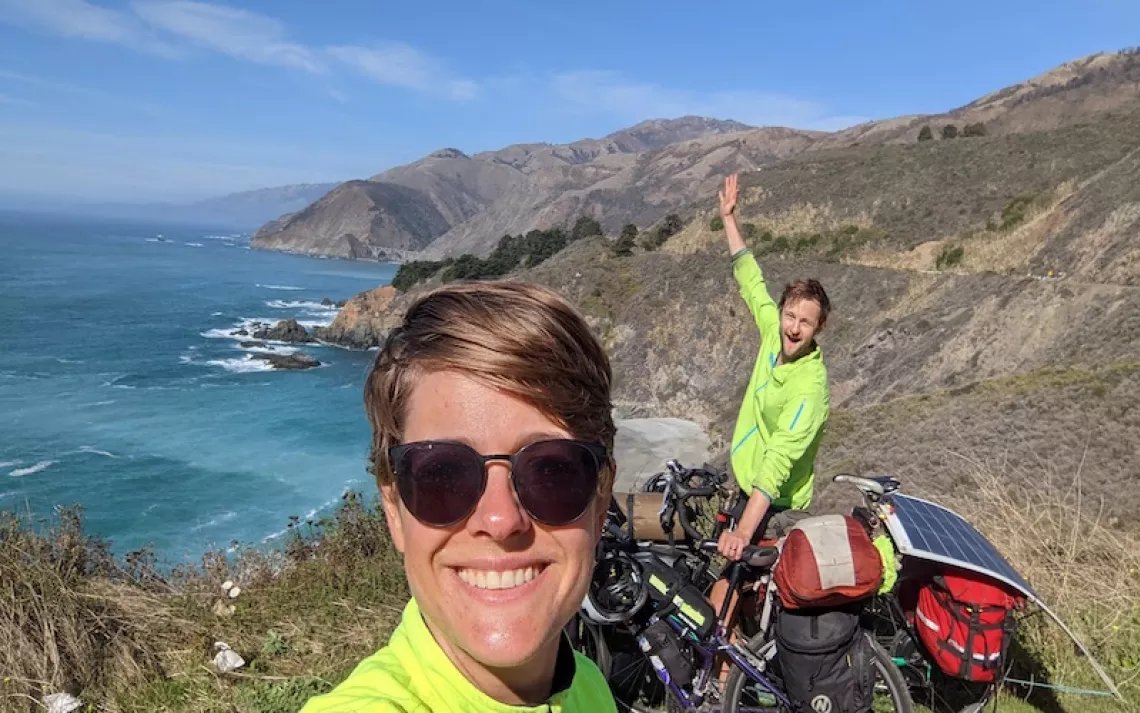E-Bikes in National Parks: Riding the Wave of Popularity
Do they offer increased outdoor access—and tons of fun?

The opinions expressed here are solely those of the writer and do not necessarily reflect the official position of the Sierra Club. While the Sierra Club supports e-bikes in urban areas and park areas where motorized vehicles are allowed, it does not support them on National Park Service single track trails and other places where motor vehicles are not allowed.
“Hey, that’s not fair!” A mountain biker half-jokingly shouted to me as I easily maneuvered my e-bike past him on the ascent of a steep single-track trail. I hadn’t ridden an e-bike before, but a local rental shop clerk had insisted “everyone was doing it” and convinced me to give it a try. I thoroughly enjoyed the experience. Still, I wondered, as e-bikes’ popularity mounts, will they become ubiquitous on our national park trails, and is that a good thing?
In recent years, e-bikes have been riding a wave of global popularity, particularly in Europe. E-bike sales make up more than 50 percent of all bike purchases in the Netherlands and Germany. While Europeans primarily seek e-bikes for urban commuting, newer, lighter mountain bikes are making inroads as well. In 2019, US e-bike sales jumped 73 percent, and predictions from Deloitte Research have the world market expanding by another 50 percent by 2023—that amounts to a $20 billion industry putting 300 million e-bikes on the world’s roads and trails.
While the environmental benefits of replacing emission-spewing gas-powered cars with e-bikes may be obvious in cities, the matter gets muddier as e-bikers hit federal, state, and local trails. On April 8, 2020, the National Park Service issued a proposed rule to formally allow class 1 e-bikes (pedal-assist up to 750 watts) access to any park terrain that’s open to other bicycles. The BLM followed a day later with the release of a similar proposal for all areas under its jurisdiction. The rules all served to formally implement the 2019 order from Secretary of Interior David Bernhardt entitled “Increasing Recreational Opportunity Through the Use of Electric Bikes.”
The Department of Interior highlights three main benefits of allowing e-bikes in national parks. For one, it asserts they promote the government’s Healthy Parks Healthy People campaign by increasing bicycle access to and within parks, allowing riders to travel farther with less effort. For another, the DOI says the new rules expand the option of bicycling to more people, particularly the elderly. Third, the department predicts e-bikes will decrease automobile traffic emissions and fossil fuel consumption. In an email, Kathy Kupper, NPS public affairs specialist, told Sierra that e-bikes “provide expanded options for visitors who wish to ride a bicycle but may be limited because of physical fitness, age, disability, or convenience.”
According to the rule’s open comments section, the public, by a ratio of nearly three-to-one, agrees with Kupper. Many pro-e-bike commenters are aging or injured cycling enthusiasts; more than a few say they’ve found e-bikes to be “life-changing” in terms of enabling them to continue to enjoy the outdoors. Cyclists who want to ride with their families say that e-bikes have made for a great equalizer, allowing the whole group to stay together. For some new cyclists, e-bikes have served as something of a gateway drug, pulling them out of their cars, away from the crowded viewing platforms, and exposing them to the parks’ raw natural beauty.
But still, the opposition is fierce. A chief issue among e-bike naysayers? Safety. My e-bike rental clerk told me that the majority of e-bike injuries their shop saw were not among young daredevils pushing the limits, but rather older riders unused to their newfound speed (or perhaps overestimating their reflexes, based on their back-in-the-day sharpness). Empirical studies have shown that e-bikers, on average, do ride faster, although the difference on class 1 bikes amounts to only about two miles an hour. Plus, there’s a limit to the speed boost—class 1 e-bikes’ motors are controlled to stop assisting at 20mph, and as many commenters noted, downhill mountain bikers and road cyclists regularly exceed this speed on their analog bikes.
From the accessibility angle, there’s a vocal minority who complain that e-bikes enable a larger percentage of cyclists the ability to bike to remote areas that were previously the domain of "serious" riders, which could result in overtourism to sensitive ecological sites. Others worry that those new to e-bikes will ride them into the backcountry until their batteries run out of juice, and then require rescue. And of course, there’s always that certain segment of hikers and horseback riders who don’t want any bikes on the trails and find e-bikes a slick new menace to their access.
The parks are also facing an open question around enforcement among the massive trail system. Who’s tracking e-bikes’ speed? Who’s monitoring the bikes’ motor size, and how? As the e-biking technologies become more sophisticated and the batteries and motors miniaturized, it’s becoming hard to tell whether some bikes are electric at all, let alone if their motors are a trail-legal 750 watts versus 800 or higher. It would be better, some say, to just keep it simple and ban all motor-assisted bikes.
Still, e-bikes have had access to national parks trails since the mid-2019 directive, and since then, spokeswoman Kupper says, “there have been no reports of related conflicts or safety issues or accidents.” That said, most parks are still deciding how to handle the issue and are collecting feedback at the local level, and the rule allows park superintendents to limit e-bike usage based on specific local circumstances. Certain parks, such as Acadia National Park, where there’s a groundswell of resistance to e-bike access, may introduce restrictions in light of safety or user conflict issues. But at the federal level, the rule seems likely to be formally approved and implemented, perhaps with some tweaks around specific e-bike classifications and definitions.
Currently, people mostly bring their own e-bikes to the parks. Soon, my rental clerk told me, e-bike rental vendors will likely expand, first on the outskirts of parks and then into official park concession areas—thus affording park staff improved ability to monitor trail-legal e-bike motors in their own territory.
As the parks reopen even with the coronavirus danger still lingering, I imagine e-bikes could get all the more popular, given their capability to offer riders better social distancing, spreading out the crowds that tend to congregate in parking lots or on easily accessible paths. I expect to see cyclists further afield, across previously under-visited park areas. Who knows? Maybe allowing e-bikes on public lands will result in fewer cars on the roads, and more people enjoying the out of doors.
In any case, when you see me on the trails, just don’t say I’m cheating, OK?
The story has been modified from its originally published version.
 The Magazine of The Sierra Club
The Magazine of The Sierra Club



